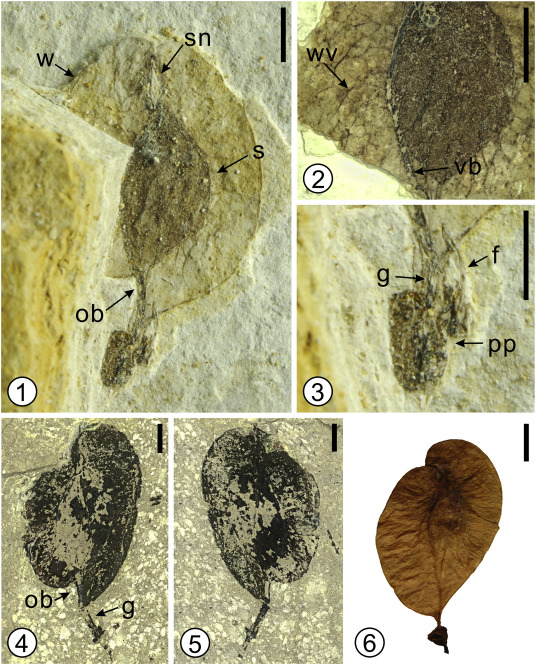Ulmus is the most diverse genus in the elm family (Ulmaceae Mirb.), comprising approximately 45 tree or shrub species. It has abundant Cenozoic megafossil records across North America and Eurasia in forms of fruits and leaves. Compared to abundant leaf fossil records, fruit fossils that could provide vital information for the evolutionary history within the genus Ulmus are still scarce.
Researchers from Xishuangbanna Tropical Botanical Garden (XTBG) reported two new fossil species of Ulmus based on several broad-winged fruits from the early–middle Miocene of the Wenshan Basin and the early Miocene of the Maguan Basin of Yunnan Province, Southwest China.
The researchers collected three compressed fruit fossil specimens from the Dashidong Village, Wenshan Basin (23° 20′ N; 104° 17′ E, 1271?m?a.s.l.) and four fruit fossil specimens from the Maguan Basin (23° 01′ N, 104° 23′ E, 1320?m?a.s.l.), Southeast Yunnan Province.
After comparing with extant species and fossil species, the researchers confirmed that the fossil species are new and named them as Ulmus prelanceaefolia and U. maguanensis.
The fossils from Maguan, Ulmus maguanensis represent the earliest record from East Asia.
“We deduce that this series may have originated in North America and dispersed to East Asia via the Bering land bridge during the Miocene”, said Prof. XING Yaowu, principal investigator of the study.
The fossils from the Wenshan Basin, Ulmus prelanceaefolia, represent the only unequivocal fossil record and are consistent with the modern distribution of ser. Lanceaefolia, suggesting that it may have originated in East Asia and persisted in situ since the middle Miocene.
“Narrow-winged lineages are early evolved and diversified since the Eocene. Our finding indicates that the karst vegetation originated no later than in the Middle Miocene”, said Prof. XING.
The study entitled “Miocene Ulmus fossil fruits from Southwest China and their evolutionary and biogeographic implications” has been published in Review of Palaeobotany and Palynology.
Contact
XING Yaowu Ph.D Principal Investigator
Key Laboratory of Tropical Forest Ecology, Xishuangbanna Tropical Botanical Garden, Chinese Academy of Sciences, Mengla, Yunnan 666303, China
E-mail: ywxing@xtbg.org.cn

Samaras of Ulmus prelanceaefolia from the Wenshan Basin and extant U. lanceaefolia.
(Images by ZHANG Qiuyue)

